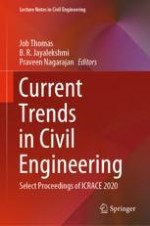2021 | OriginalPaper | Buchkapitel
Feasibility Study of Using Coir Geotextiles in Permeable Pavement Construction for Stormwater Management
verfasst von : Mohan Kavitha, Subha Vishnudas, K. U. Abdu Rahiman
Erschienen in: Current Trends in Civil Engineering
Verlag: Springer Singapore
Aktivieren Sie unsere intelligente Suche, um passende Fachinhalte oder Patente zu finden.
Wählen Sie Textabschnitte aus um mit Künstlicher Intelligenz passenden Patente zu finden. powered by
Markieren Sie Textabschnitte, um KI-gestützt weitere passende Inhalte zu finden. powered by
